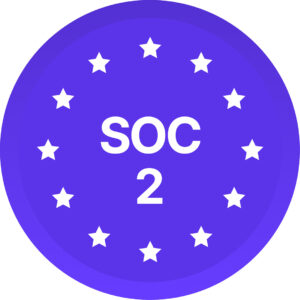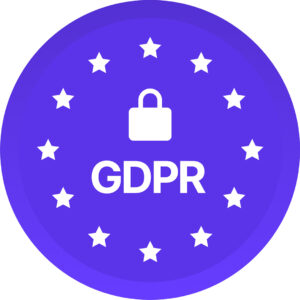We need to have an open and good old-fashioned chat about something that matters a whole lot: diversity, equity, inclusion, and belonging (DEIB) in healthcare leadership. Now, I know what you might be thinking: “Matteo, aren’t those just fancy words for doing the right thing?” Well, sure, DEIB is the right thing to do, but it’s also the smart thing to do. In healthcare, it’s not just about hearts and minds; it’s about operational and leadership effectiveness—and ensuring every patient and caregiver gets the dignity and care they deserve.
So, let’s grab our metaphorical clipboards and dive into why DEIB matters, the challenges it faces, and how leaders can step up to the plate to create a more inclusive and effective healthcare system. I’ll even sprinkle in a few real-world stories from my own lived experience to drive the point home.
Bias in AI: When technology fumbles the ball
Now, picture this: You’re watching your favorite team, and they bring in a hotshot new player—someone with all the fancy stats and high-tech skills. Everyone’s excited because this player’s supposed to make the team faster and better. But then, this player fumbles the ball. Again. And again. Turns out, the hotshot wasn’t trained right, and now the whole team is suffering. That’s a lot like what happened with an AI-powered patient care system in one hospital I worked at.
Two patients came into the ER after a car accident. Both were male, same weight, similar injuries. The system was designed to make care faster and more efficient—like the MVP of patient care. But something went sideways. One patient, who was racialized, received a significantly lower dosage of pain medication compared to another patient. When we dug into the system, we found the root of the problem: the admitting clerk had to select “race/ethnicity” when entering the patients. Based on skin color alone, the clerk made an assumption. The AI system then used that input to automatically adjust pain protocols—baking bias right into the system.
Let that sink in for a moment. The racialized patient’s pain was underestimated not by a person, but by a machine—a machine that was supposed to be fair and efficient. And that’s why leaders have to pay attention. AI isn’t inherently unbiased; it reflects the data it’s trained on and the assumptions built into it. If those assumptions are skewed, the system fumbles, and patients suffer.
Bias goes beyond the charts
Here’s another story that’ll get your blood boiling. An 8-year-old boy came to the ER with a greenstick fracture in his forearm—a pretty standard injury. But just 10 minutes later, a nurse was drawing blood for two tests: an A1C (for diabetes) and a BAC (blood alcohol concentration). Why? Neither test was indicated for the injury, nor were they ordered by the physician. When we looked under the hood of the AI system, we found the problem: the moment “Indigenous/First Nation” was selected for the patient’s race, the system automatically ordered these tests. Not because they were needed, but because of baked-in biases assuming that Indigenous patients are more likely to have diabetes or alcohol-related issues.
This wasn’t just unnecessary and invasive; it was flat-out discriminatory. It eroded trust in the healthcare system and wasted resources. Worse still, it highlighted how bias—even unintentional—can harm the very people healthcare is supposed to serve.
As leaders, this is our wake-up call. We can’t rely on technology to fix bias for us. We have to fix it ourselves by challenging the assumptions built into our systems and creating safeguards to protect our patients.
Bias in the break room: Challenges for healthcare teams
Bias doesn’t just show up in patient care; it also sneaks into the break room, the meeting room, and everywhere else healthcare teams work together. Take the issue of foreign-trained nurses. With the acute shortage of nurses in North America, hospitals have been hiring more professionals from countries like the Philippines. These nurses are mission-critical, yet they often face derogatory comments from both patients and coworkers because of their accents or backgrounds.
Imagine pouring your heart into patient care, only to be met with racist remarks or dismissive attitudes. That’s the reality for many foreign-trained nurses. What’s worse? Leadership in some hospitals has turned a blind eye to this behavior, leading to a culture of distrust, disengagement, and even legal risks.
Now, I’ve always believed that leadership sets the tone for the locker room—and the same goes for healthcare. Inclusive leaders don’t just expect their teams to “be resilient” and tough it out. They create an environment where respect is non-negotiable, where everyone feels valued, and where bad behavior is called out and addressed.
Why DEIB matters for leadership effectiveness
Let’s get back to why DEIB isn’t just about being nice or doing the right thing—though it is both of those things. It’s also a game-changer for operational and leadership effectiveness. Here’s how:
- Better patient outcomes: When patients feel seen, heard, and respected, their trust in the healthcare system increases. This leads to better communication, higher adherence to treatment plans, and improved outcomes. Eliminating bias in systems and practices isn’t just ethical; it’s lifesaving.
- Stronger teams: Inclusive leaders foster environments where diverse teams thrive. When nurses and other staff feel supported and valued, they’re more engaged and less likely to burn out. And let’s be real: in a field as demanding as healthcare, we need all hands on deck.
- Operational efficiency: Addressing bias reduces unnecessary tests, procedures, and conflicts, saving both time and resources. Plus, inclusive cultures attract and retain top talent, cutting down on turnover and recruitment costs.
- Legal and ethical responsibility: Ignoring bias and discrimination isn’t just a bad look; it’s a liability. Leaders who take proactive steps to create equitable workplaces protect their organizations from lawsuits and reputational damage.
The role of inclusive leadership
So, how do we tackle these challenges head-on? The answer lies in inclusive leadership—leaders who listen, learn, and act to make their teams and systems better for everyone. Here are some plays healthcare leaders can run to make a real difference:
- Call out bias in systems: Don’t just implement new technologies and assume they’ll work perfectly. Review them for bias, test them rigorously, and involve diverse voices in their development and oversight.
- Create safe reporting channels: Make it easy for staff to report discrimination or bias without fear of retaliation. And when issues arise, address them promptly and transparently.
- Invest in DEIB training: Equip leaders and staff with the tools to recognize and address bias, foster inclusion, and navigate cultural differences. This isn’t a one-and-done deal; it’s an ongoing process.
- Support foreign-trained professionals: Provide mentorship, language support, and cultural orientation for foreign-trained staff. Celebrate their contributions and make it clear that discriminatory behavior will not be tolerated.
- Engage patients in the process: Include patients from diverse backgrounds in decision-making about policies and technologies. After all, they’re the ones who feel the impact most directly.
A call to action
Healthcare isn’t just about treating illness; it’s about caring for people. And you can’t truly care for people if you’re not committed to seeing and valuing them for who they are. Bias—whether it’s in a high-tech AI system or a low-tech conversation—can be a barrier to that care. And it’s up to us as leaders to break down those barriers.
We’ve got a long road ahead, but every step we take toward greater diversity, equity, inclusion, and belonging brings us closer to a healthcare system that’s not just effective, but truly human. If you’re looking for expert guidance to create inclusive healthcare environments or address systemic barriers, Diversio can help you take the next step.
So, let’s get out there, keep learning, and keep leading with heart. Because when we lift each other up, we all rise together. Now that’s a win.
Our newsletter and blogs feature personal opinions and diverse perspectives on diversity and inclusion. While individual articles may not reflect every reader’s view, we value the diversity of opinions and respect our contributors’ insights.

